








The magazine of the art-form of the photo-essay
“A free, really high quality photo-essay magazine. Fabulous!”
Stephen Fry. British actor, writer and film & documentary maker

Dec 2015 back issue


by Nacho Hernandez
The Saharawi people used to be called the children of the clouds in the past because, as nomad shepherds, they
would follow the clouds in the desert for weeks, hoping for rain. For forty years they have been chasing what is
becoming an equally elusive goal: their own, independent homeland in the Western Sahara.
In 1975, with Franco on his death-bed, Moroccan and Mauritian troops entered Western Sahara to divide the former
Spanish colony. Tens of thousands of Saharawi fled to neighboring Algeria. Forty years later, two generations have
already been born and live a destitute existence in the bleached refugee camps of Tindouf.
These camps are located in what has been called the "desert's desert" or the "devil's garden", a Sirocco-swept section
of the Algerian Hamada where temperatures can easily exceed 50 degrees. Although the Saharawi, an incredibly
resilient people, have been able to organize life in the camps and have limited access to education and health care,
they are completely dependent on an international aid that is becoming less reliable each year. What is even worse,
they keep waiting for a solution to their conflict which never comes. The UN-sanctioned referendum of independence is
constantly denied by Morocco. Meantime, the over 150,000 Saharawi in the camps remain stuck in a limbo of
perpetual provisionality.
Some Saharawi still try to live a nomadic life in the "liberated territories", looking for pastures and following the rain
with their camels and goats. The liberated territories comprise about one third of the Western Sahara and are
controlled by the Saharawi Polisario Front and its army. The rest of the Western Sahara, including its main cities and
all its natural resources, is controlled by Morocco.
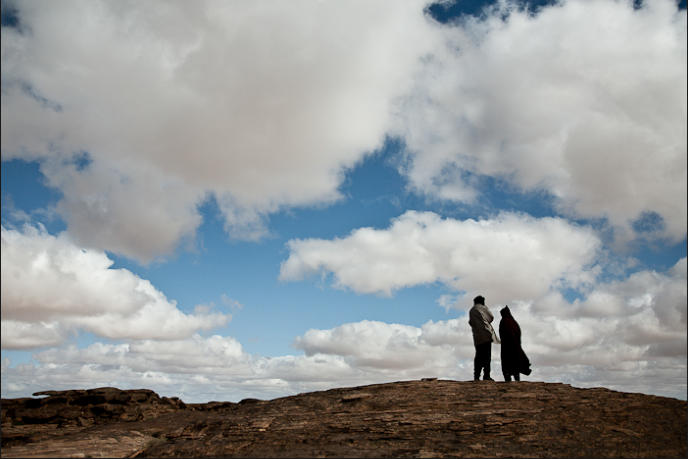
Liberated Territories, Western Sahara. Two Sahrawi men staring at the land under the hills of Rekeiz Lemgasen. This
part of the Western Sahara, the “liberated territories”, is controlled by the Sahrawi Polisario Front and its army, unlike
the rest of the Western Sahara, occupied by Morocco.
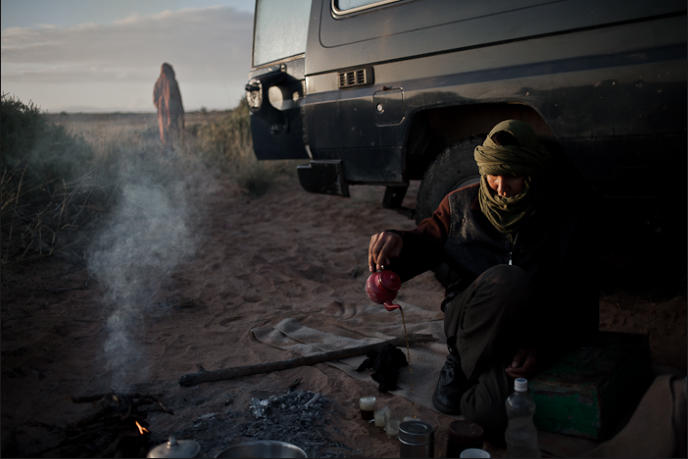
Liberated Territories, Western Sahara. Laulad, a soldier with the Sahrawi army, prepares the first tea of the day after a
night sleeping in the open air in the desert.
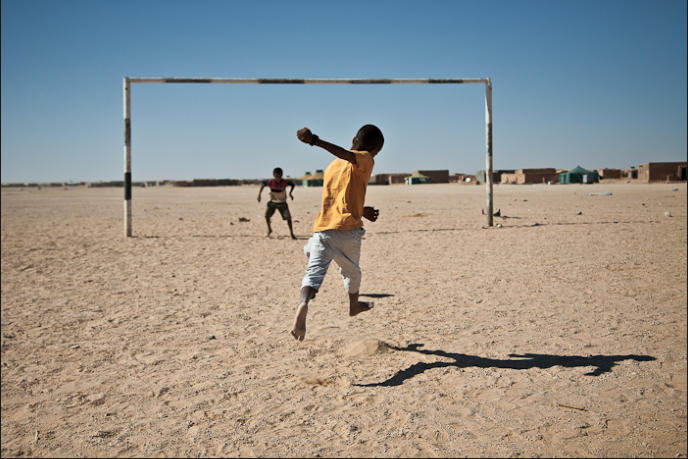
Children playing football at the Smara refugee camp in Tindouf, Algeria.
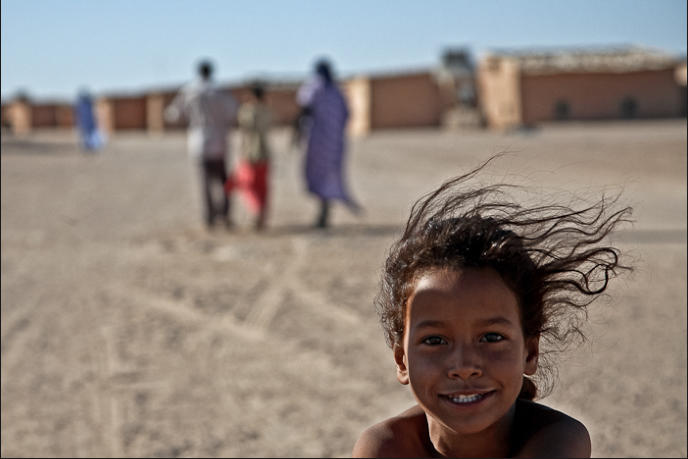
Fatimetu, a little girl, at the Smara Saharawi refugee camp in Tindouf, Algeria.
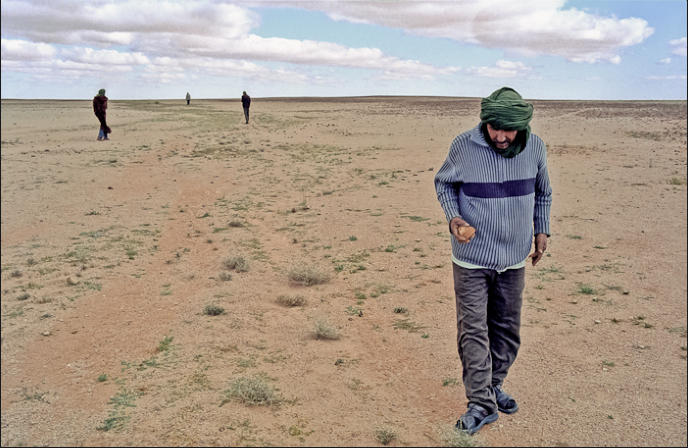
Western Sahara. Saharawi men looking for desert truffles in the Liberated Territories, the section of the Western
Sahara controlled by the Polisario Front and not occupied by Morocco.
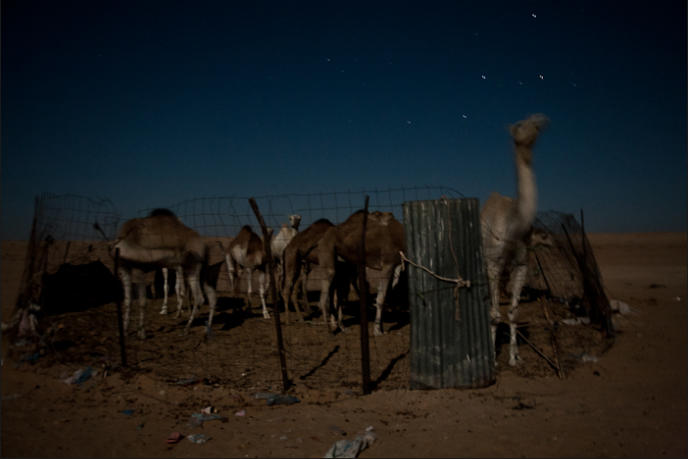
Saharawi refugee camps. Camels waiting for the butcher at the Smara refugee camp, near Tindouf, Algeria. Camels
are the main source of meat at the Tindouf refugee camps where over 150,000 Saharawi refugees live.
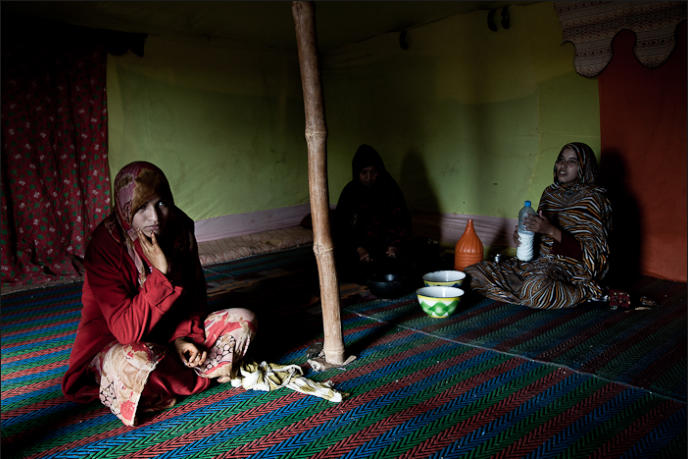
Members of a Saharawi bedouin family in their tent, in the Western Sahara. Some Saharawi still live like nomads in
the Liberated Territories, the section of the Western Sahara not occupied by Morocco and controlled by the Polisario
Front.
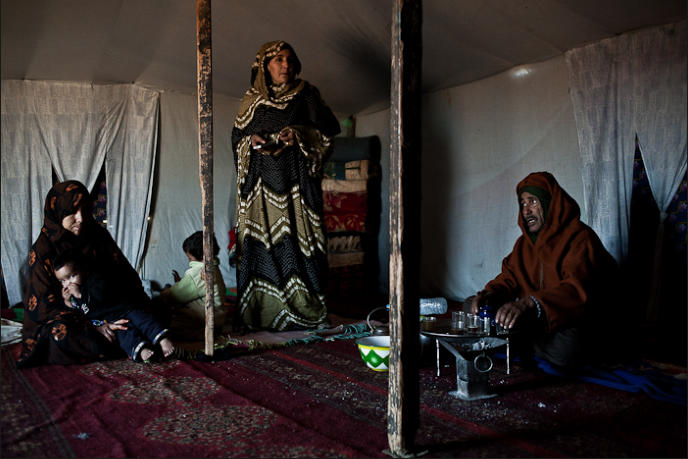
Western Sahara. The Liberated Territories. Saharawi sharing tea in their tent, in the Western Sahara. Some Saharawi
still live like bedouin nomads in the Liberated Territories, the section of the Western Sahara not occupied by Morocco
and controlled by the Polisario Front.
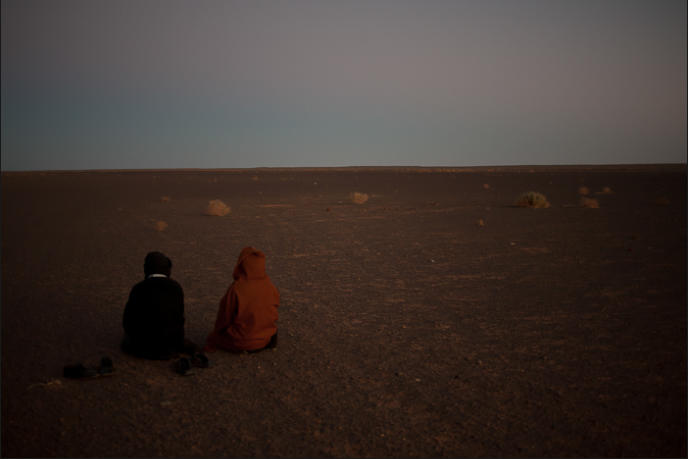
Western Sahara. Saharawi men praying in the desert.
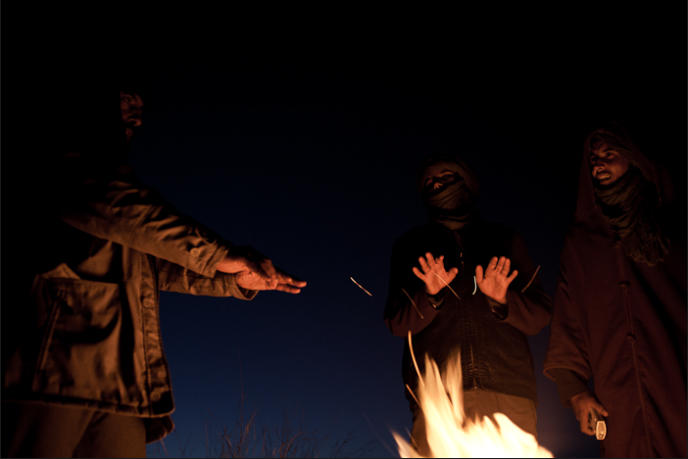
Liberated Territories, Western Sahara. A group of Sahrawi men warm themselves by the fire, getting ready to spend
the night in the desert.
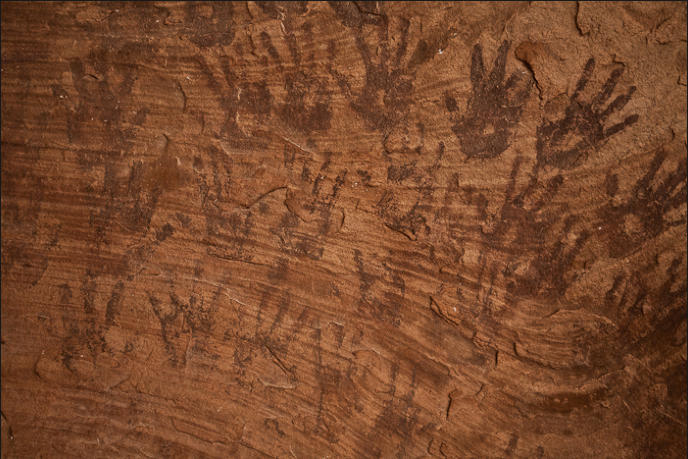
Liberated Territories, Western Sahara. Prehistoric paintings of Rekeiz Lemgassem in open-air caves. Thousands of
years later the same gesture is often repeated in protests by Sahrawis in the occupied Western Sahara or in exile in
other countries.
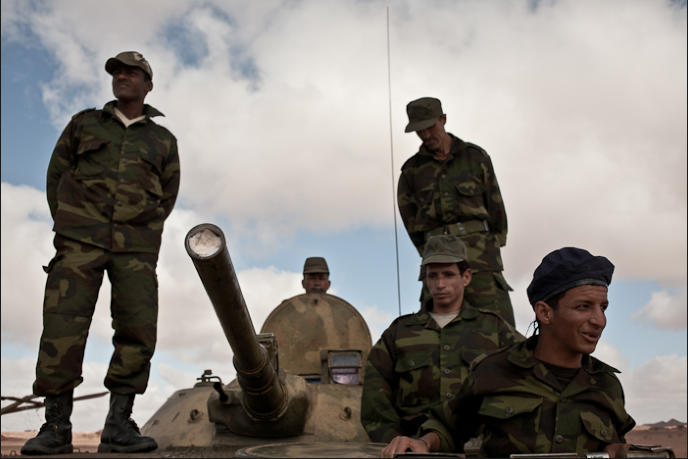
Liberated Territories, Western Sahara. The crew of a tank of the Sahrawi army, in the Liberated Territories.
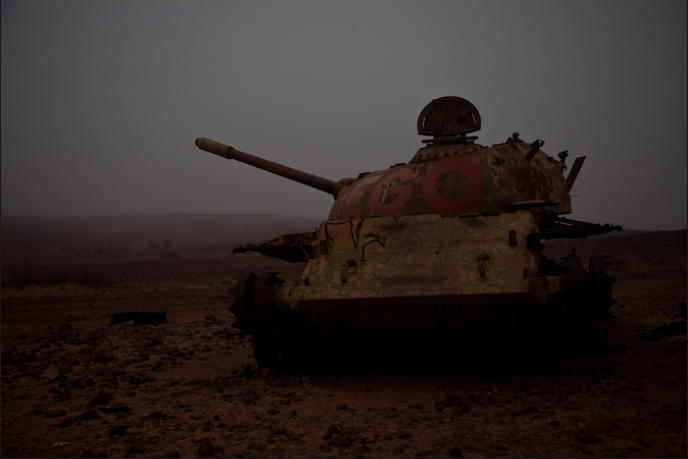
Tifariti, Western Sahara. A tank destroyed during the war between the Polisario Front and Morocco.
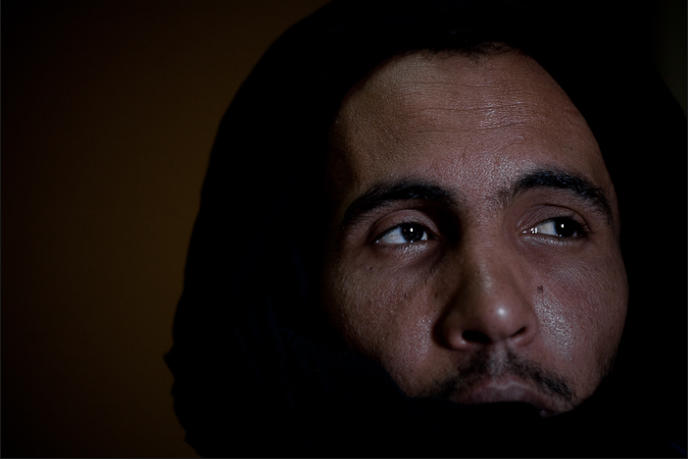
Smara refugee camp, Western Sahara. Raul, a Saharawi refugee in the Samara refugee camp near Tindouf, Algeria.
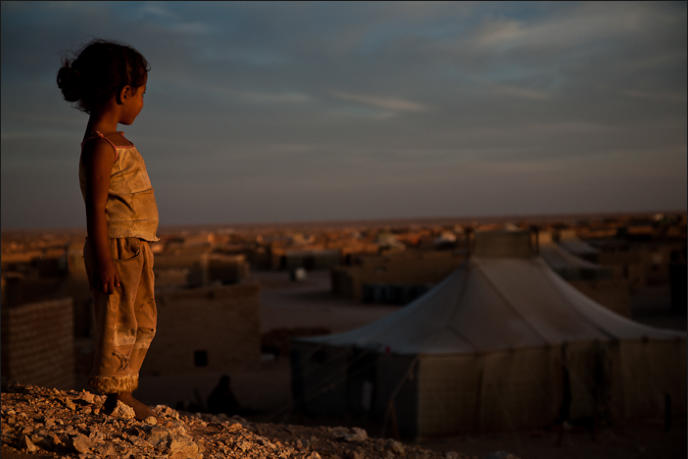

Western Sahara. Smara refugee camp. Glana, a four year old girl watches sunset fall over the camp. Her family's
tent in the background. More than 150,000 Saharawi refugees live in the Tindouf camps in Algeria.
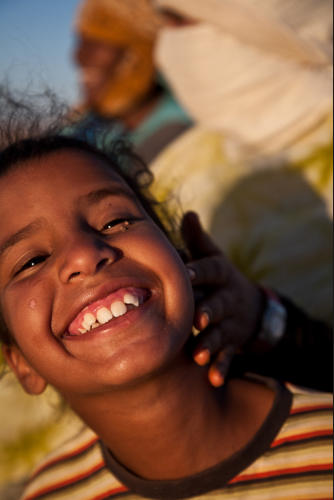
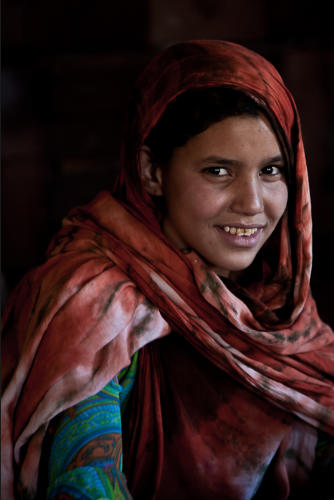
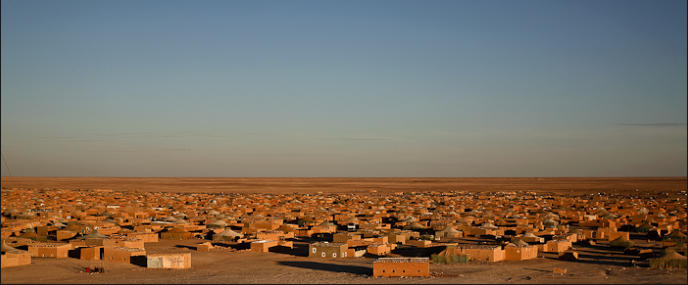
View of the Smara refugee camp near Tindouf, Algeria. Smara is the biggest of the four main Saharawi refugee camps
in Southern Algeria.

Smara refugee camp. A Saharawi girl smiles while being
caressed by a family member.
Smara Saharawi refugee camp. Ibila, is one of the
150,000 Saharawi refugees living in the Tindouf camps.





